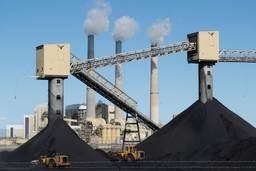With Donald Trump as President, Americans Are Flocking to Socialism
Membership in the Democratic Socialists of America has surged since the election.
Kate Aronoff

One evening the week before Christmas, about 100 people squeezed into a room in the Brooklyn Free School, located on one of central Brooklyn’s posher streets. The private school’s chair collection exhausted itself within minutes as attendees packed the room for the monthly meeting of the Brooklyn chapter of the Democratic Socialists of America (DSA) — which, just a month earlier, had fit easily into the same space.
Since Nov. 8, 2016, thousands have joined DSA. The organization has ballooned to over 14,000 members, more than doubling in size from 6,500 members in May 2016. DSA National Director Maria Svart says of new sign-ups, “You could literally see the moment when Trump was declared the winner.”
Organizations such as the ACLU and Planned Parenthood are reporting a similar spike in new members and donations in the wake of Trump’s election. But interest in socialist groups, grown accustomed to being small and isolated in U.S. politics, appears to be surging in a way it hasn’t in decades. Many of those joining are young people who don’t have their parents’ Cold War hangups about socialism. Politicians like Bernie Sanders — an avowed socialist whom many supporters are looking to for an effective counter to Trump — have further sparked their interest in a politics outside mainstream Democrats and Republicans.
That puts DSA in a promising, if uncertain, position in the wake of Trump’s election. “People … are looking to DSA as an organization that full throatedly supported Bernie Sanders in the primary and has the potential to be a serious part of the fightback, both to Trump and to the neoliberal wing of the Democratic Party,” says Svart.
Founded in 1982 out of the remnants of the ’60s New Left, DSA also has roots in Eugene Debs’ Socialist Party of America, which at its height in 1912 boasted 113,000 dues-paying members. Eager to avoid the pitfalls of insular ideological squabbles, DSA strives to work with community organizations and social movements. Following the election, DSA chapters have mobilized to support organizing by communities threatened by Trump and his supporters, including local mosques and immigrant rights organizations. DSA is also working on building a multiracial membership — its current members are predominantly white — while supporting existing organizing by communities of color. Brooklyn DSA’s Racial Justice working group, for example, is partnering with the New York-based group Communities United for Police Reform to help pass the Right to Know Act, aimed at increasing transparency and accountability on the part of the NYPD.
Ultimately, says Svart, there’s agreement within the organization about “the need for a multi-racial, anti-capitalist movement that is in touch with the grassroots.”
For now, DSA is proving an on-ramp for those frustrated with Trump and the Democratic establishment alike. The Brooklyn meeting on Dec. 22, 2016, was the first for Hannah Silverman, a New York native who worked on local Democratic campaigns in high school but grew disillusioned with politics before heading off to Brown University, where she graduated in 2015.
“I was afraid [the meeting] would feel futile,” she said as chairs were being collected toward the end. Instead, she was pleasantly surprised by the tailored facilitation — after a discussion of the importance of organizing “openly as socialists” at the local level, the meeting broke out into smaller committees on everything from affordable housing fights to climate justice — and the high attendance. “Looking at Trump’s election, the only way to spin it positively is that it compelled a lot of people to become politically active,” she noted. “It created a sense of urgency that was missing.” She plans to attend next month’s meeting. In New York City alone, DSA now has 1,000 members.
But deep-blue Brooklyn isn’t the only place where democratic socialism is undergoing a resurgence. Local organizers are in the process of getting six new chapters off the ground in Florida and four in Ohio, both of which went for Trump in November. DSA’s tiny national staff, funded entirely by dues and small donations, has been overwhelmed by requests to create new chapters around the country and is looking for ways to expand accordingly.
Tom Tilden, 59, is among those DSA members setting up shop for socialism deep in Trump country. Tilden is a DSA veteran, having joined when he lived in Chicago in the late ’80s. But when he moved to Nebraska in 1993, Tilden says, he didn’t consider starting a new chapter there, though he remained a member of the national organization. When people talk about “the Left” in conservative Nebraska, Tilden explains, they’re referring to “people in the middle of the Democratic Party leftward. ‘The Left’ is progressive. People don’t usually think in terms of socialist.”
But that may be changing after Sanders’ primary run, which “changed the nature of the Democratic Party in the state” while stripping away some of the taboos that plague socialist politics, says Tilden. In Nebraska’s March 2016 caucus, Clinton won just 10 of the state’s pledged delegates to Sanders’ 15, and he successfully won over some of the state’s most rural counties. Since the caucuses, Tilden has been working to get a new chapter off the ground in Omaha, and another has sprung up in nearby Lincoln. About 30 people attended the first meeting in December 2016.
Like many other DSA members around the country, Tilden sees potential in building institutions outside the Democratic Party, but is also a firm believer in trying to stage a takeover from the inside. This fall, he joined Keystone XL pipeline opponent Jane Kleeb on the ticket to run Nebraska’s Democratic Party. She’s now the party’s state chair. Tilden is second associate chair, and has similar goals for his work in this position as he does as a local DSA organizer: Reaching working-class voters, especially those who went for Trump but might yet be won over to the kind of anti-racist, anti-capitalist movement that DSA hopes to build.
“People in rural Nebraska are more progressive than they realize,” Tilden reasons. While door-knocking during the Sanders campaign, he and other volunteers found that many rural voters took firm stands against corporate agriculture and attacks on public education. “I think once we work with them on their issue, they’ll see that the people on their side are not the Republicans.”
Instead, Tilden hopes, they just might embrace an entirely different shade of red.
Kate Aronoff is a staff writer at The New Republic and author of Overheated: How Capitalism Broke the Planet — And How We Fight Back. She is co-author of A Planet To Win: Why We Need a Green New Deal and co-editor of We Own the Future: Democratic Socialism—American Style. Follow her on Twitter @katearonoff.









